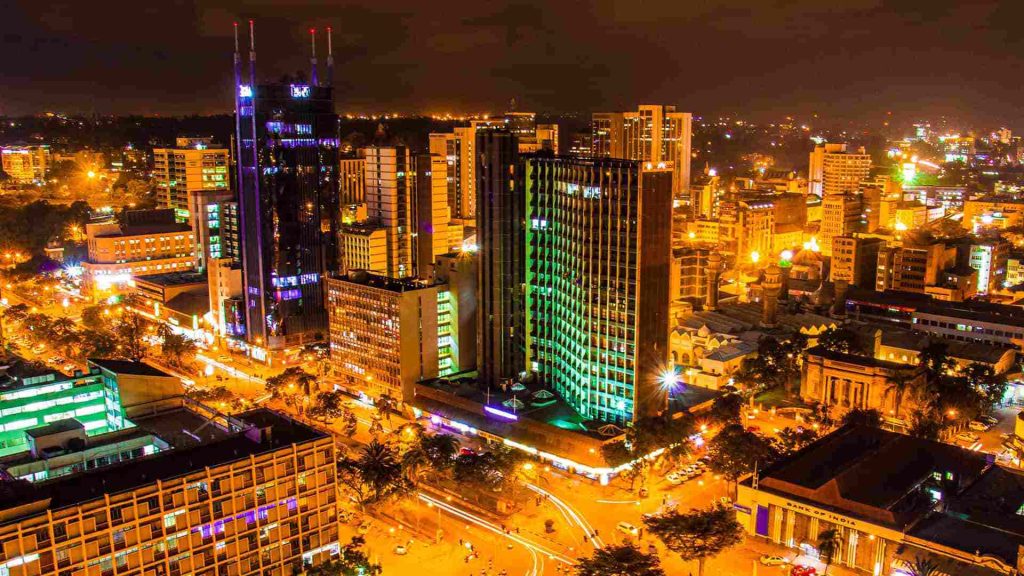Fixed Income Quarterly – Q3

Fixed Income Quarterly – Q3 2023 Macro-Economic Overview Nigeria’s inflation continued to climb, reaching 25.80% in August, over 300bps increase from figures as at the end of Q2 2023. On the back of the persistent rise in inflation, the MPC decided to increase the MPR by 25bps to 18.50%, narrow the asymmetric corridor to +100/-300 basis points around the MPR, while retaining the CRR and Liquidity ratio at 32.50% and 30% respectively at the July 2023 MPC meeting. The September meeting was postponed to further notice A new CBN governor, Dr. Olayemi formally assumed duty in an acting capacity last week Friday, September 22, 2023, after which the Senate approved his nomination. New Deputy Governors of the Central Bank of Nigeria were also confirmed by the Senate. Oil prices averaged $83.80/$ in Q3, peaking at $96.55/$ on 27Sep on the back of the tight global supplies, following the deal to reduce production by major producers – Saudi Arabia and Russia. Brent crude oil closed the quarter at $96.10/b. Nigeria’s Gross Domestic Product (GDP) grew by 2.51% (year-on-year) in real terms in the second quarter of 2023. This growth rate, lower than the 3.54% recorded in Q2’2022, can be attributed to the challenging economic conditions in the nation. The Nigerian FX reserve dropped to $33.25bn as at 26th September, amid FX supply challenges. Interbank liquidity averaged c.N312bn through the quarter, closing around c.N35bn after hitting a high of c.N896bn early July and a low of repo c.N396bn mid September. Total FAAC disbursement for the quarter was c.N2.042trn with c.N1.15trn for Jul and c.N891.93bn for May respectively. Sources: FMDQ, CBN, NBS, Bloomberg Market Performance in Q3-2023 Bond market The Nigerian local bond market traded on a mixed note during Q3 2023, with yields generally trending upwards. The bears dominated the market in July and August, following the MPC’s decision to increase the monetary policy rate by 25bps to 18.75%. However, the market turned mildly bullish in towards the end of September, with demand skewed to the shorter-term maturities. Yields on benchmark bonds rose by 150 bps on average during the quarter. The market climate, however, took a turn as September drew to a close, with a mild bullish wave encompassing the market. Notably, there was an increase in demand for shorter-term maturities. The fluctuating trends culminated in a net increase of the benchmark bond yields by an average of 150 basis points by the end of the quarter. Several factors came into play to drive these trends in Q3 2023: Hawkish CBN stance: The Central Bank of Nigeria (CBN)’s hawkish stance to curb inflation was a key driver of the upward trend in bond yields in Q3 2023. The CBN raised the monetary policy rate by a cumulative 100 bps over the quarter, to 18.75%. This increase in interest rates made it more expensive for borrowers to borrow money, which in turn led to a rise in bond yields. Inflation concerns: Inflation remains a major concern in Nigeria, with the headline inflation rate rising to a 17-year high of 20.52% in August 2023. High inflation erodes the purchasing power of investors, making them less willing to invest in long-term bonds with fixed interest rates. System liquidity: System liquidity tightened in Q3 2023, due to a number of factors including the CBN’s open market operations (OMOs) and the loan-to-deposit ratio (LDR) policy. This tightening in liquidity made it more expensive for banks to lend money, which in turn led to a rise in bond yields. Treasury bill market The treasury bills market recorded mixed sentiments amid cautious trading in Q3.The quarter started off with bullish bias as participants sourced for attractive on the back of the relatively liquid system. Mid quarter, offers improved across board following the significant hike in the stop rates at the auctions, and tight system liquidity, as players looked to fund their obligations. Also, the CBN floated the first OMO auction of the year which saw participants looking to exit their positions in anticipation for higher yields. Throughout the quarter, we recorded an uptrend in stop rates at the auction, save for the last auction which saw a decline of 151bps, 45bps and 161bps on the standard tenors respectively. All in all, stop rates improved by 213bps, 305bpsand 543bps to close the quarter at 4.99%, 3.05% and 11.37% respectively. Eurobond Market The SSA Eurobond market experienced a volatile Q3 2023, with yields fluctuating on global economic factors, domestic economic developments, and central bank decisions. The quarter began with bearish sentiment, as the US Federal Reserve signaled more rate hikes due to persistent core inflation. However, sentiment turned bullish in mid-July following favorable US CPI data (down from 4.10% to 3.00%) and strong consumer sentiment. This bullish trend continued through late July, as the US economy beat expectations and inflation remained controlled. However, the market turned bearish in early August, following a US credit rating downgrade, to AA+ from AAA, citing fiscal deterioration and repeated down-the-wire debt ceiling negotiations that threaten the government’s ability to pay its bills. The market remained mixed for the remainder of August, as investors weighed global economic risks and domestic economic developments. In September, the market saw bearish sentiment again, as US inflation surged from 3.20% to 3.70%, and the Fed maintained a hawkish stance. Overall, the SSA Eurobond market experienced a volatile Q3 2023, with yields fluctuating on a range of factors. There was a shift in investor focus towards shorter-maturity Eurobonds. This suggests that investors are seeking to reduce their exposure to long-term risk. Country Event Nigeria Nigeria’s Eurobond market experienced mixed performance in Q3 2023. Yields were up in the early part of the quarter, but turned bullish in mid-July following favorable US CPI data and strong consumer sentiment. However, yields rose again in early August following a US credit rating downgrade. The market remained mixed for the remainder of the quarter, as investors weighed global economic risks and domestic economic developments. In terms of domestic economic developments, Nigeria’s inflation rate hit a
Fixed Income Quarterly – Q2 2024

Fixed Income Quarterly – Q2 2024 Macro-Economic Overview Nigeria’s inflation increased further, reaching 33.95% level in May, with food inflation at 40.66% and core inflation at 27.04%. At the MPC meeting held in May, the committee decided to increase the MPR further by 150bps to 26.25%, in a bid to remain steadfast in achieving price stability. The asymmetric corridor was retained at +100/-300 around the MPR, and the CRR and liquidity ratio was also retained at 45% and 30% respectively. Oil prices averaged $85.02/b this quarter, peaking at $91.21/b on the 5th of April. This spike was driven by the heightened geopolitical tensions and potential supply risk. Nigeria’s Gross Domestic Product (GDP) grew by 2.98% y-o-y (year-on-year) in real terms in Q1’2024, a decline from the 3.46% y-o-y recorded in Q4’2023. The service sector recorded the largest growth of 4.32% for the quarter and contributed 58.04% to the aggregate GDP. Coming from Q1, we witnessed a decline in the Nigerian FX reserves this quarter, due to the intervention by the CBN in the parallel market, to support the Naira. We recorded a low of $32.1bn, with a peak at c.$34bn late June. The eventual rise in the reserve can be attributed to increased crude oil prices, diaspora remittances, and foreign portfolio investment. Interbank liquidity averaged repo c.N184bn through the quarter, with a high of c.N951bn in late June and a low of repo c.N1.29trn mid-April. The Total FAAC disbursement for Q2 stood at c.N4.20trn with April recording the highest at c.N1.87trn. Sources: FMDQ, CBN, NBS, Bloomberg Market Performance in Q2-2024 Bond market The Bond market witnessed mixed sentiments through the quarter. Bullish bias commenced the quarter however, following the release of the quarterly bond calendar improved offers were seen across the bond curve. Post auction, buy interests continued, further stimulated by the increased inflation figures. Bullish sentiments continued into the second month, nonetheless, demand waned weeks into the month as players stayed on the sidelines while anticipating the auction and MPC outcome. Towards the end of May, the bond market saw slightly improved offers with a bit of cherry picking across board. Closing the quarter, minimal activity was recorded as players maintained the cautious stance while awaiting the auction for the month. Following the outcome of the auction, the bond yield curve adjusted with profit taking activities seen across board. Q-o-Q yields declined by an average of c.74bps across the curve. The DMO offered a total of N1.35trn at the bond auctions for the quarter across the 29s, 31s and May 33s. c.N1.3trn was sold through the quarter (vs. N1.78trn sub.), with stop rates closing the quarter at 19.64%, 20.19% and 21.50% respectively. Treasury bill market The quarter opened with bearish bias on the back of system illiquidity. This bias continued post first auction, as players took profit especially on the new 1-year paper. However, pockets of demand emerged towards the end of April-2024 as participants looked to take advantage of the market levels. The second month started out with bullish sentiments amid scarce offers as players took on a cautious stance while anticipating the outcome of the MPC meeting. Following the MPC decision and FAAC inflow, demand intensified amid some profit taking activities. In the last month of the quarter, mixed sentiments were witnessed albeit, with a bearish tilt. Mid- month, we witnessed a bit of cherrypicking, albeitthe quarter closed out with the bears taking the centre stage. Q-o-Q, yields increased by an average of c.230bps across the Jul’24-Feb’25 maturities. The CBN floated seven OMO auctions during the quarter offering c.N3.05trn across the standard tenors. Sales through the quarter was about N2.0trn despite the oversubscriptions recorded at the auctions. Worthy of note is the no sale recorded at the penultimate auction floated in the quarter despite the N321.5b subscription. The DMO conducted seven auctions through the quarter with each month recording about 8x . 3.6x, 3.8x oversubscription respectively. In total, the FG oversold c.N1.37trn across the standard tenors. Stop rates remained relatively stable through the quarter, however closing at 16.30% (vs. 16.24% Q1 ending), 17.44% (vs. 17.00% Q1 ending) and 20.68% (vs. 21.124% Q1 ending). Eurobond Market The SSA Eurobond market started the year with cautious optimism. The market in Q1 2024 has been influenced by a variety of factors, including global economic trends, geopolitical developments, central bank policies, and domestic economic conditions. Some nations reported improved economic growth and improved fiscal positions, supporting investor confidence in their sovereign bonds, while others grappled with challenges such as high inflation, fiscal deficits, and debt sustainability concerns. SSA sovereigns faced pressures at the start of 2024 due to fiscal concerns and a stronger dollar from a high interest rate driven by global central bank inflation-fighting policies via rate hikes. African countries are, however, now returning to the international debt capital market to access funds amidst sluggish economic expectations in 2024, as expectations of a possible global rate cut in 2024 continue to support investors’ interest. Global Economic Factors The SSA Eurobond market in Q2 2024 continued to be influenced by global economic trends, geopolitical developments, central bank actions, and domestic economic situations in each country. While cautious optimism from Q1 persisted, some headwinds emerged. Global factors such as the pace of anticipated rate cuts in the United States and ongoing geopolitical tensions, including the Russia-Ukraine war, contributed to market volatility. Inflationary pressures remained a concern, with some SSA countries facing rising prices. The US Federal Reserve’s stance on interest rates continued to be a key driver. The Fed maintained a cautious approach, with one rate cut implemented in May 2024. Further cuts are contingent on inflation data aligning with their target. Global economic growth showed signs of slowing down compared to Q1. Geopolitical tensions, particularly the ongoing war in Ukraine, continued to disrupt supply chains and exert upward pressure on energy prices. Country Event Nigeria Nigeria’s Eurobond market in Q2 2024 was marked by cautious stability. Key developments included: Economic Policies: The Central Bank of Nigeria (CBN) continued efforts to stabilize
Fixed Income Quarterly – Q1 2024

Fixed Income Quarterly – Q1 2024 Macro-Economic Overview Nigeria’s inflation hit an all-time high, reaching 31.70% in February, with food inflation at 37.92% and core inflation at 25.13%. To contain the fast-rising consumer prices, the MPC continued its hawkish stance, as the MPR was increased by 400bps to 22.75% in February, following a further jump to 24.75% in March. The asymmetric corridor changed to +100/-700 in February before it was returned to the previous range (+100/-300 around the MPR) in March. The CRR was also increased to 45% from 32.50%, while the liquidity ratio was retained at 30%. Oil prices averaged $81.66/b in Q1, peaking at $87.70/b on the 19th of Mar, on the back of the disruption to the Russian refining activities following attacks from Ukraine. Nigeria’s Gross Domestic Product (GDP) grew by 3.46% y-o-y (year-on-year) in real terms in the fourth quarter of 2023, coming from a 3.52%y-o-y recorded in Q4’2022. The growth recorded was largely driven by the service sector, which recorded a growth of 3.98% y-o-y. The Nigerian FX reserve has recorded some improvement this quarter, as it currently stands at $34.3bn coming from $32.9bn in Q4 2023. This can be attributed to improved diaspora remittances, foreign portfolio investment and crude oil earnings amidst settlement of outstanding forward contracts. Interbank liquidity averaged repo c.N236bn through the quarter, with a high of c.N863bn early January and a low of repo c.N2.29trn mid-March. The Total FAAC disbursement for the quarter stood at c.N3.40trn with February recording the highest at c.N1.15trn. Sources: FMDQ, CBN, NBS, Bloomberg Market Performance in Q1-2024 Bond market The bond market opened the year with participants trading cautiously while awaiting the Q1 bond auction calendar. The Jan-24 bond auction release saw the removal of 53s which led to a bit of rally especially on the 2053 paper. The first auction of the year saw stop rates close higher leading to yields adjusting across the curve in the secondary market amid sparce bids as players focused on the shorter end of the curve. The bearish bias continued mid quarter with offers across the curve as bids remained limited. The Feb-24 bond circular saw new 7-year and 10-year bond issuance which further fueled the bearish bias. Following the outcome of the auction with papers closing significantly higher, the bond curve adjusted yet again in the secondary market. Towards the end of Q1, activity waned in the bond market as most players remained on the sidelines. The bond circular for Mar saw the re-opening of the 7-year and 10-year papers and the introduction of a new 3-year issuance. Following the auction, bearish sentiments amid cautious approach was sustained as there was also a private sale of N2.35tn worth of bonds (new 26s, new 27s, new 28s) by DMO. Closing the quarter, average yield rose by c.126bps across the curve. Treasury bill market The Treasury bills market opened the year with bullish bias on the back of the system liquidity. The continued demand drove yields lower leading to a resistance in the market towards the end of the month. This led to a reversal in yields coupled with the lower system liquidity witnessed amid the high stop rate in the persistent OMO auctions by the CBN. Mid quarter, bearish sentiments were dominant as market players sold off their positions in a bid to prepare for the high yield environment. This bearish momentum was further fueled by the NTB auction calendar with an over c.N1tn offer and anticipated increase in MPR. Most activity remained on the newly issues papers. Towards the end of the quarter, the treasury bills market recorded mixed sentiments albeit with a bearish bias on the back of the low system liquidity. A bit of cherry picking was seen especially on the long end. Offers were seen across board especially on the longer end of the curve as players sold off their positions to meet their obligations. The quarter ended with the Feb-25 and Mar-25 maturities trading around 18.85% and 18.95% respectively. Eurobond Market The SSA Eurobond market started the year with cautious optimism. The market in Q1 2024 has been influenced by a variety of factors, including global economic trends, geopolitical developments, central bank policies, and domestic economic conditions. Some nations reported improved economic growth and improved fiscal positions, supporting investor confidence in their sovereign bonds, while others grappled with challenges such as high inflation, fiscal deficits, and debt sustainability concerns. SSA sovereigns faced pressures at the start of 2024 due to fiscal concerns and a stronger dollar from a high interest rate driven by global central bank inflation-fighting policies via rate hikes. African countries are, however, now returning to the international debt capital market to access funds amidst sluggish economic expectations in 2024, as expectations of a possible global rate cut in 2024 continue to support investors’ interest. Global Economic Factors Economic data from the United States, including 3.4% GDP growth in Q4 2024 (vs. 4.9% in Q3 2023) and mixed signals in the labour market (highest unemployment rate since January 2022 at 3.90% vs. 275,000 added jobs in February, up from 229,000 in January), drove moderate uncertainty in the pace of anticipated rate cuts later in the year. Also, escalating geopolitical tensions, including the Russia-Ukraine and Israel-Palestine wars and their impact on energy prices (brent crude briefly crossed $87 per barrel), contributed to market volatility. Concerns over inflationary pressures and supply chain disruptions from attacks by rebels in the Red Sea also influenced market sentiment. The central banks of developed economies, including the US Federal Reserve, maintained a cautious approach to monetary policy. The Fed signalled a holding pattern on interest rates, recently leaving rates unchanged in March. However, the Fed’s stance leans towards three cuts by the end of 2024, contingent on inflation continuing to decline towards their target of 2%. Investors in the SSA Eurobond market generally interpreted the US Fed stance with cautious optimism. Country Event Nigeria Nigeria’s Eurobond market saw mixed performance in Q1 2024. During the quarter, factors


